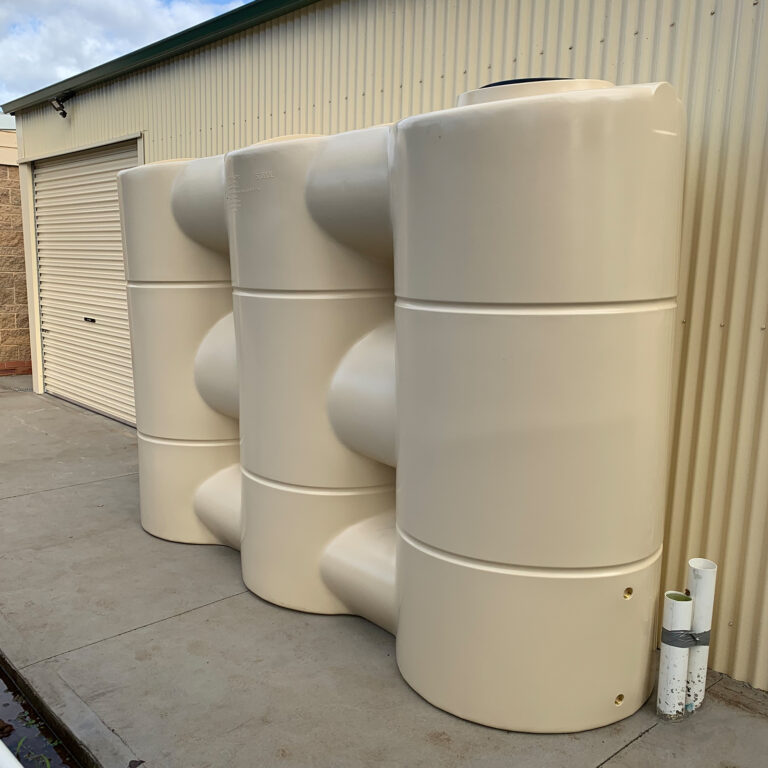Slimline Water Tanks: The Perfect Selection for Urban Water Storage Space
Wiki Article
Comprehending the Value of Rainwater Tanks in Drought-Prone Regions for Water Protection
In regions at risk to extended droughts, the duty of rain storage tanks in reinforcing water safety and security is a topic of expanding importance. As neighborhoods come to grips with the challenges of water deficiency, comprehending the value of these storage tanks surpasses mere collection of rain. Rainwater tanks serve as a crucial tool in minimizing the impact of water scarcities by providing a lasting source of water for different demands. However, real value of rainwater containers extends far past mere storage; it incorporates resilience-building measures and the promo of lasting water conservation methods. This diverse strategy to water security warrants a closer evaluation of the function rain containers play in ensuring a trustworthy water supply during times of drought.Benefits of Rainwater Storage Tanks
Making use of rain storage tanks uses a sustainable service for increasing water and enhancing water safety and security in property and industrial settings. One of the main benefits of rainwater storage tanks is their capability to lower dependence on mains water supply. By recording and saving rainwater that falls on rooftops, this alternate source can be utilized for various non-potable objectives such as watering, flushing toilets, and washing clothes. This not only saves treated drinking water yet likewise lowers water costs for individuals.
Rainwater Harvesting Methods
Rain harvesting strategies include a range of approaches developed to effectively accumulate and store rainwater for different functions, adding to water conservation and sustainability. Another preferred strategy is the use of above-ground or below ground storage space containers to store rain for later usage.
In addition, rain yards and absorptive pavements are innovative strategies that include landscape design or paving surface areas in a means that enables rainwater to percolate right into the ground, renewing groundwater books. Additionally, shape farming and terracing are agricultural techniques that aid record rain and stop dirt erosion in sloping surface. By carrying out these varied rainwater harvesting strategies, neighborhoods can improve water safety and durability in drought-prone regions while promoting lasting water monitoring practices.
Relevance of Water Safety
Guaranteeing reliable accessibility to clean and enough water sources is critical for maintaining human health and wellness, economic advancement, and environmental health. Water protection is a crucial element of social strength, specifically in areas susceptible to dry spells and water deficiency. Ample water security includes different measurements, consisting of schedule, quality, and ease of access of water for domestic, farming, commercial, and ecological needs.Water safety and security plays a critical role in promoting public wellness by lowering the frequency of waterborne diseases and guaranteeing cleanliness facilities. Economically, water protection is crucial for agricultural efficiency, commercial procedures, and general financial development. Slimline water tanks. Moreover, water security is very closely connected to ecological sustainability, as it supports communities, biodiversity, and overall eco-friendly balance.
In drought-prone regions, water safety and security ends up being also much more essential because of the increased danger of water shortages. Applying approaches like rain harvesting, water recycling, and effective water administration methods can substantially improve water safety and security in these locations. By prioritizing water safety, communities can better withstand the impacts of climate modification, population development, and other challenges that intimidate water accessibility.
Enhancing Water Durability
With increasing global water difficulties, building durability in water systems has become a crucial emphasis for sustainable growth efforts. Enhancing water strength includes implementing approaches to ensure water schedule and high quality despite altering ecological conditions, such as droughts, floods, and pollution.One secret aspect of improving water resilience is promoting the use of rain tanks in drought-prone regions - Slimline water tanks. look at here Rainwater tanks work as an efficient means of catching and saving rainwater for later use, lowering reliance on scarce freshwater sources throughout completely dry durations. By including rain harvesting systems into water management strategies, neighborhoods can enhance their capacity to endure water deficiency and keep water safety and security

Sustainable Water Conservation
In the middle of intensifying water obstacles, the sensible monitoring of water resources via sustainable preservation practices is essential for making sure long-lasting environmental security and societal wellness. Sustainable water preservation entails the effective Get More Information use of water resources to satisfy current needs without jeopardizing the ability of future generations to satisfy their very own demands. By applying techniques such as rainwater harvesting, greywater recycling, and water-efficient modern technologies, communities can minimize water wastage and ease stress on freshwater resources.Moreover, sustainable water preservation practices add to ecosystem health by preserving ample water levels in rivers, lakes, and wetlands, sustaining biodiversity, and maintaining natural habitats. These techniques likewise play an essential duty in reducing the influences of climate change by assisting to adjust to transforming precipitation patterns and water accessibility.

Conclusion
Finally, this link rain tanks play a vital duty in enhancing water safety and security and strength in drought-prone areas. By using rainwater harvesting strategies, neighborhoods can reduce their dependence on traditional water resources and advertise lasting water preservation methods. This not just assists mitigate the influences of water deficiency throughout dry spells yet additionally contributes to lasting water safety and resilience despite environment change challenges.Report this wiki page